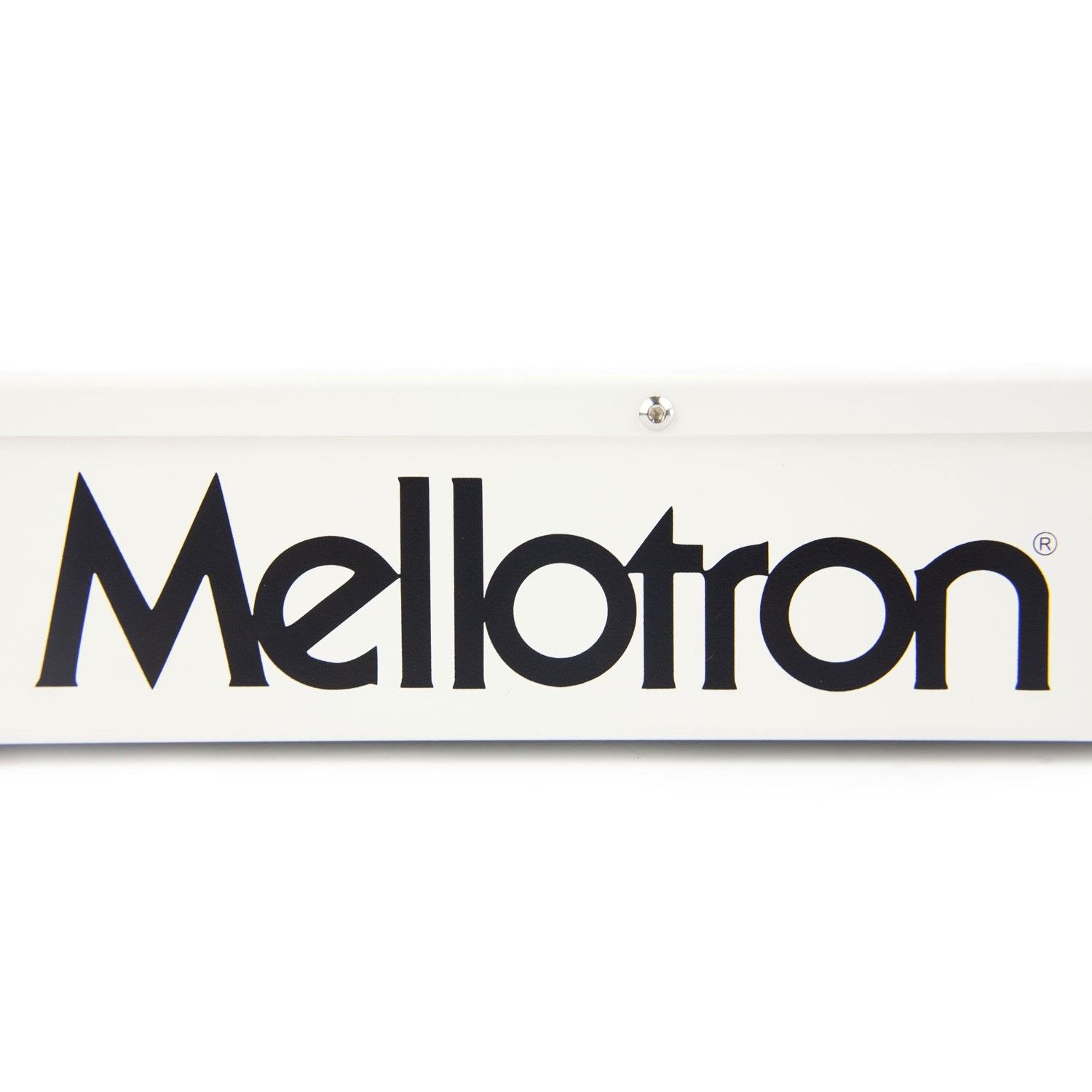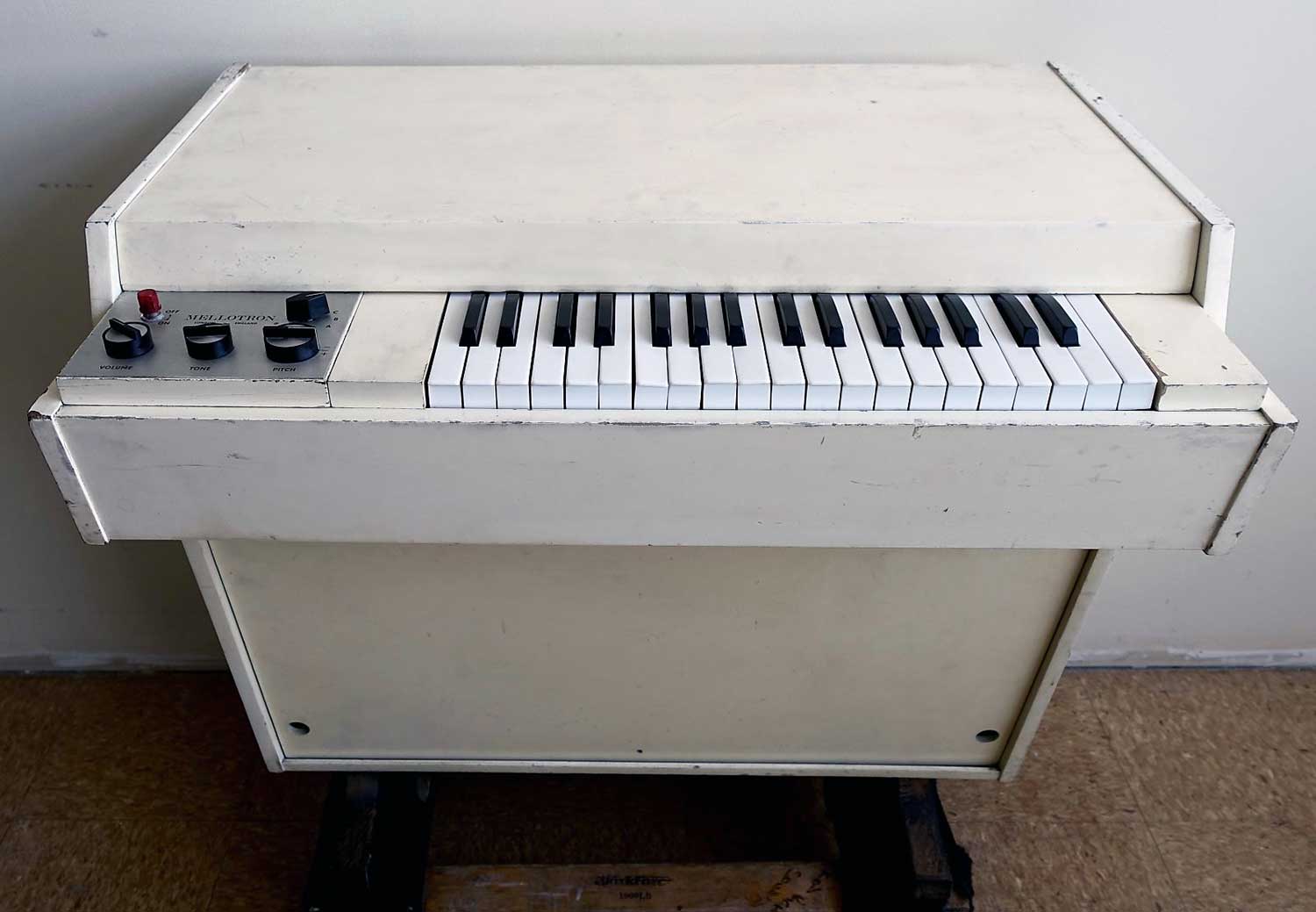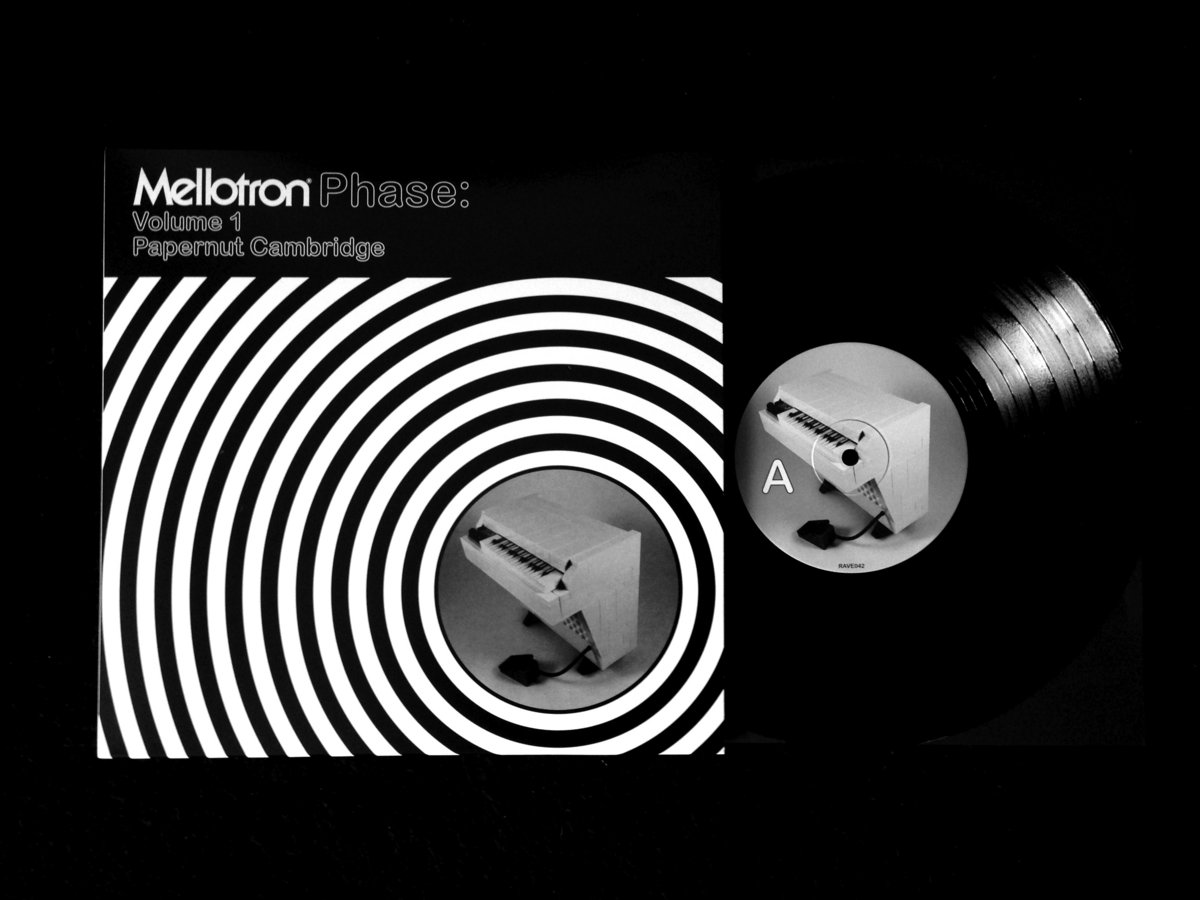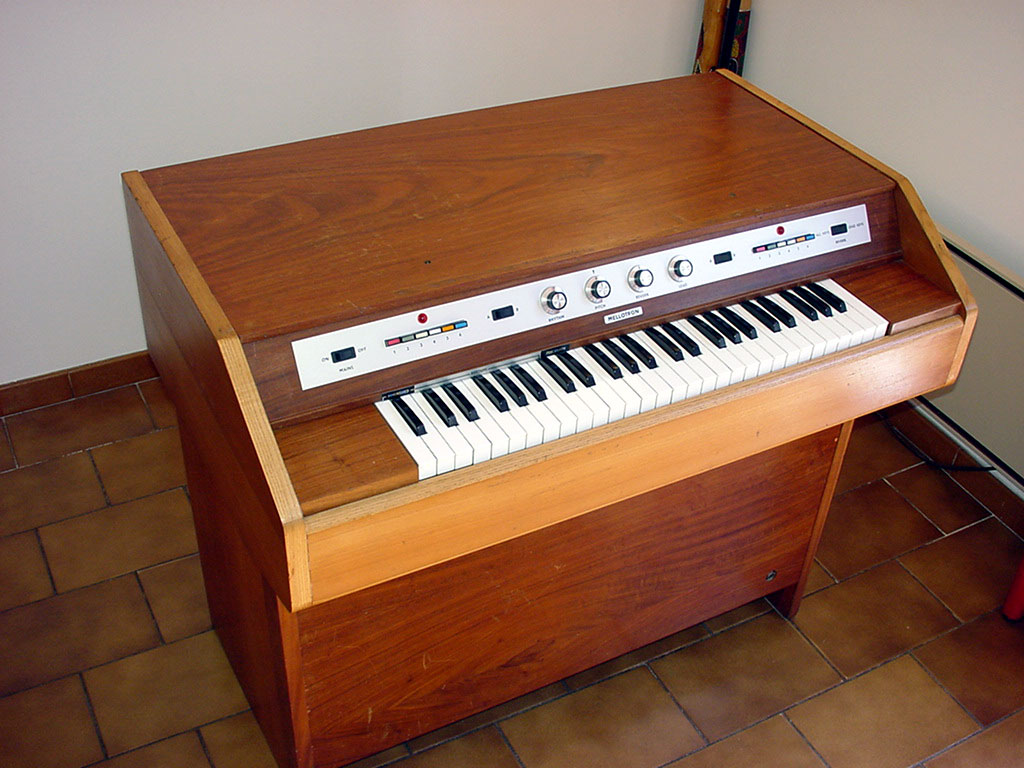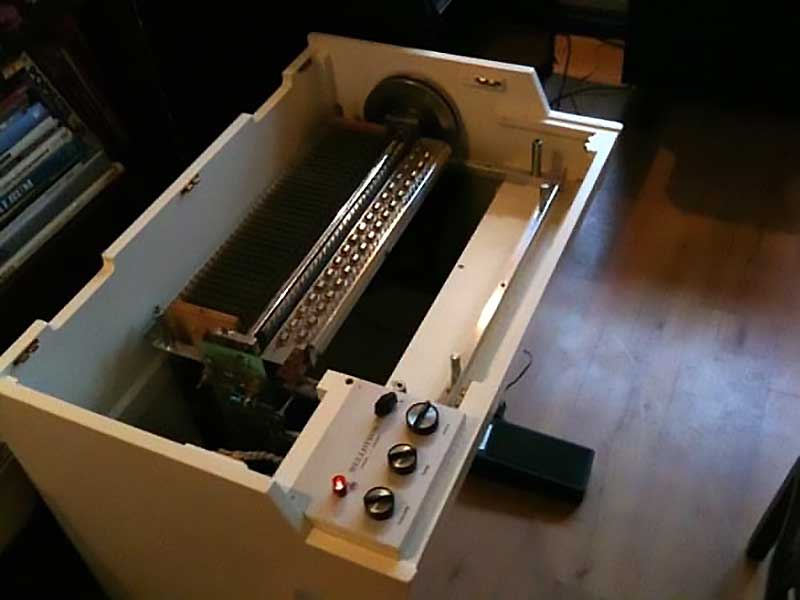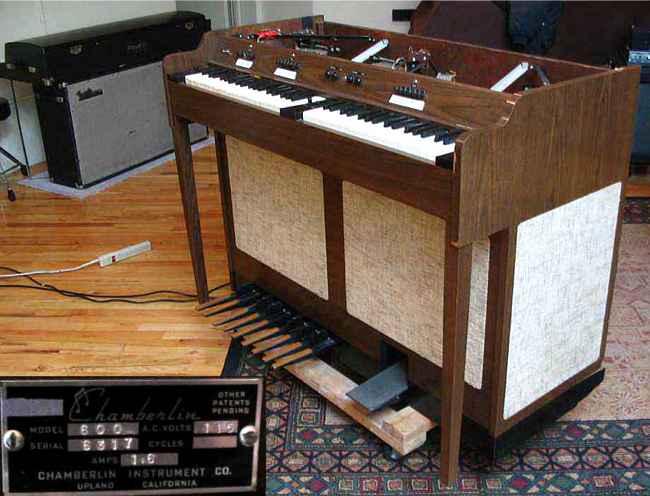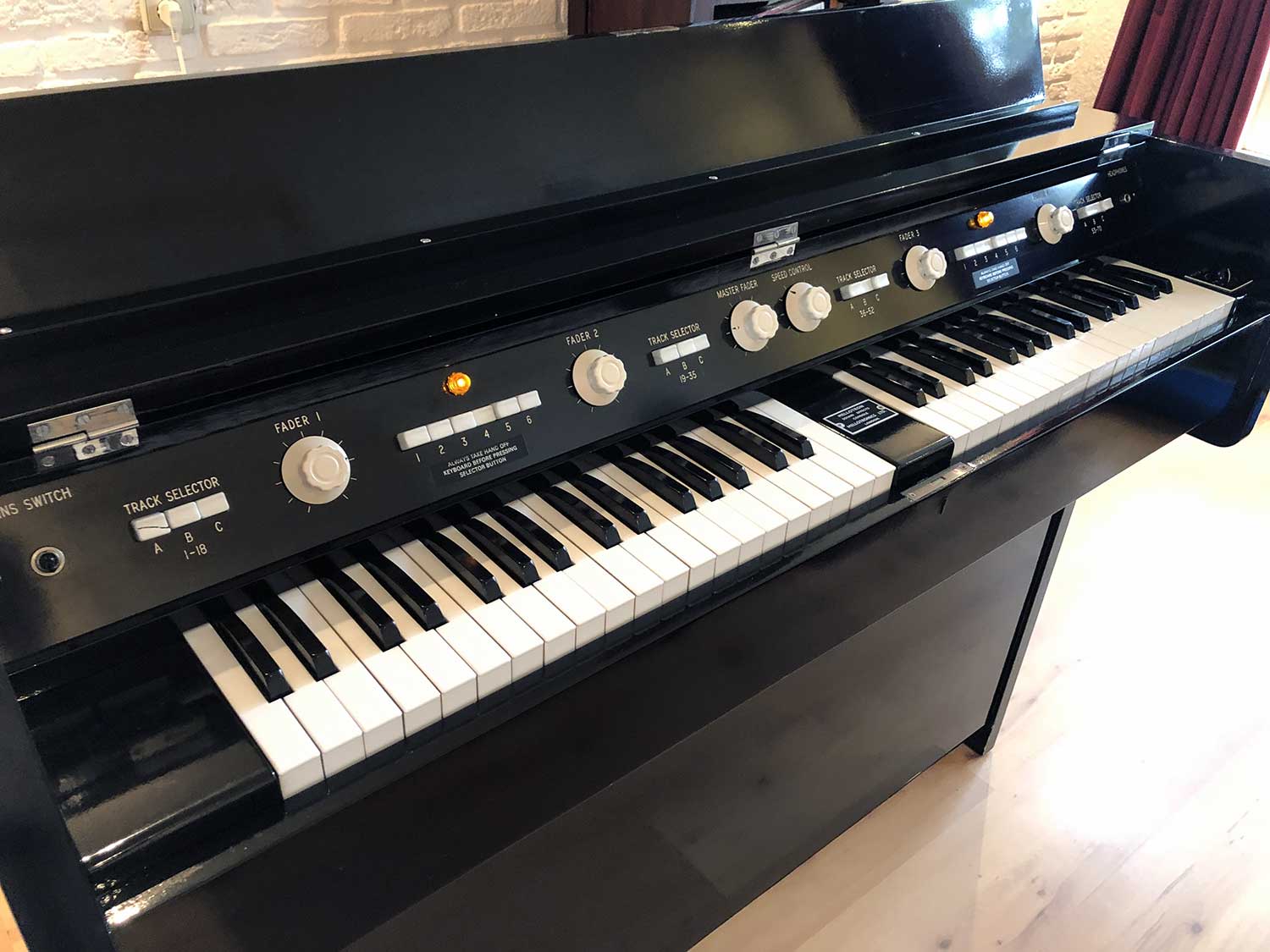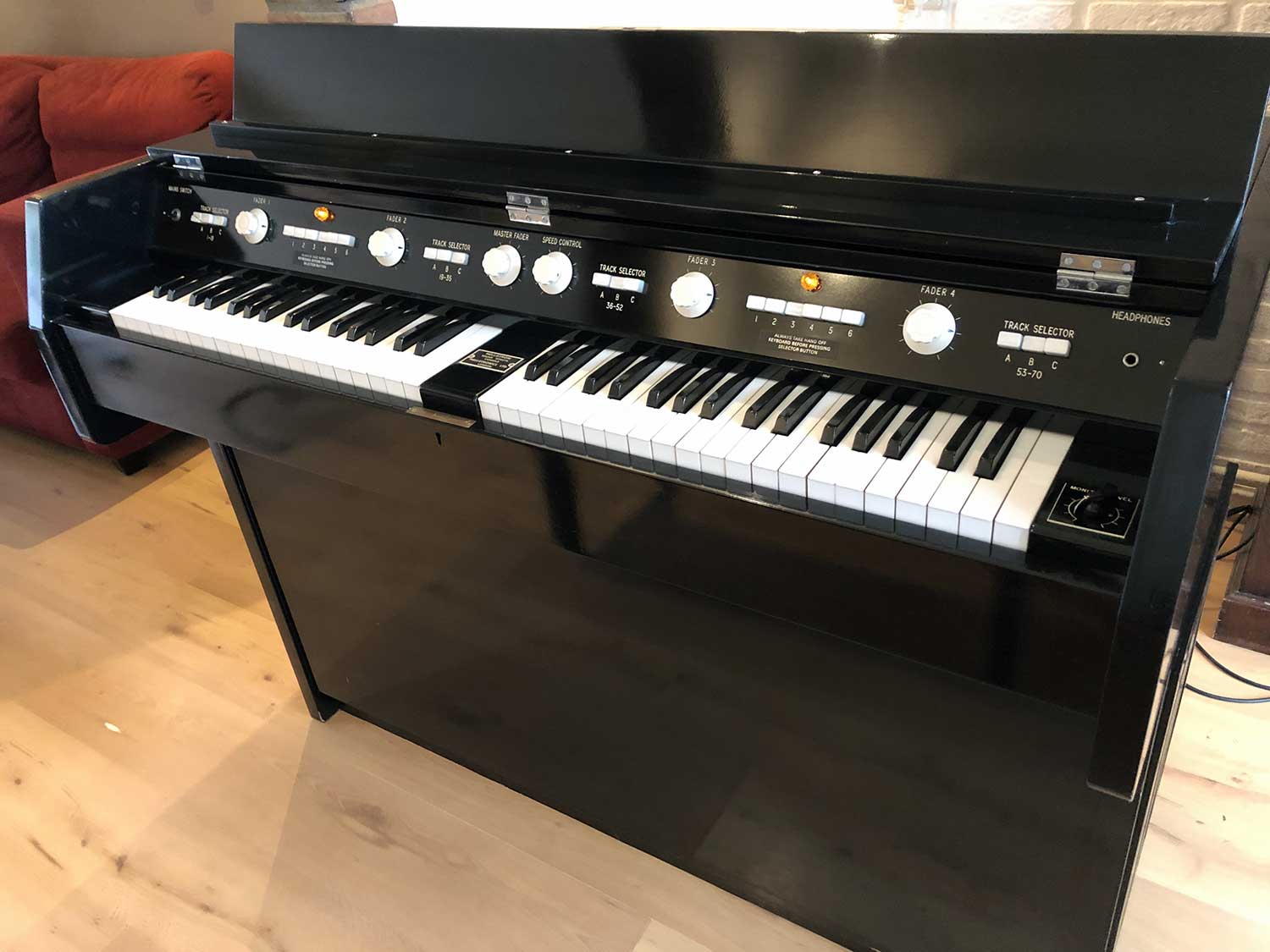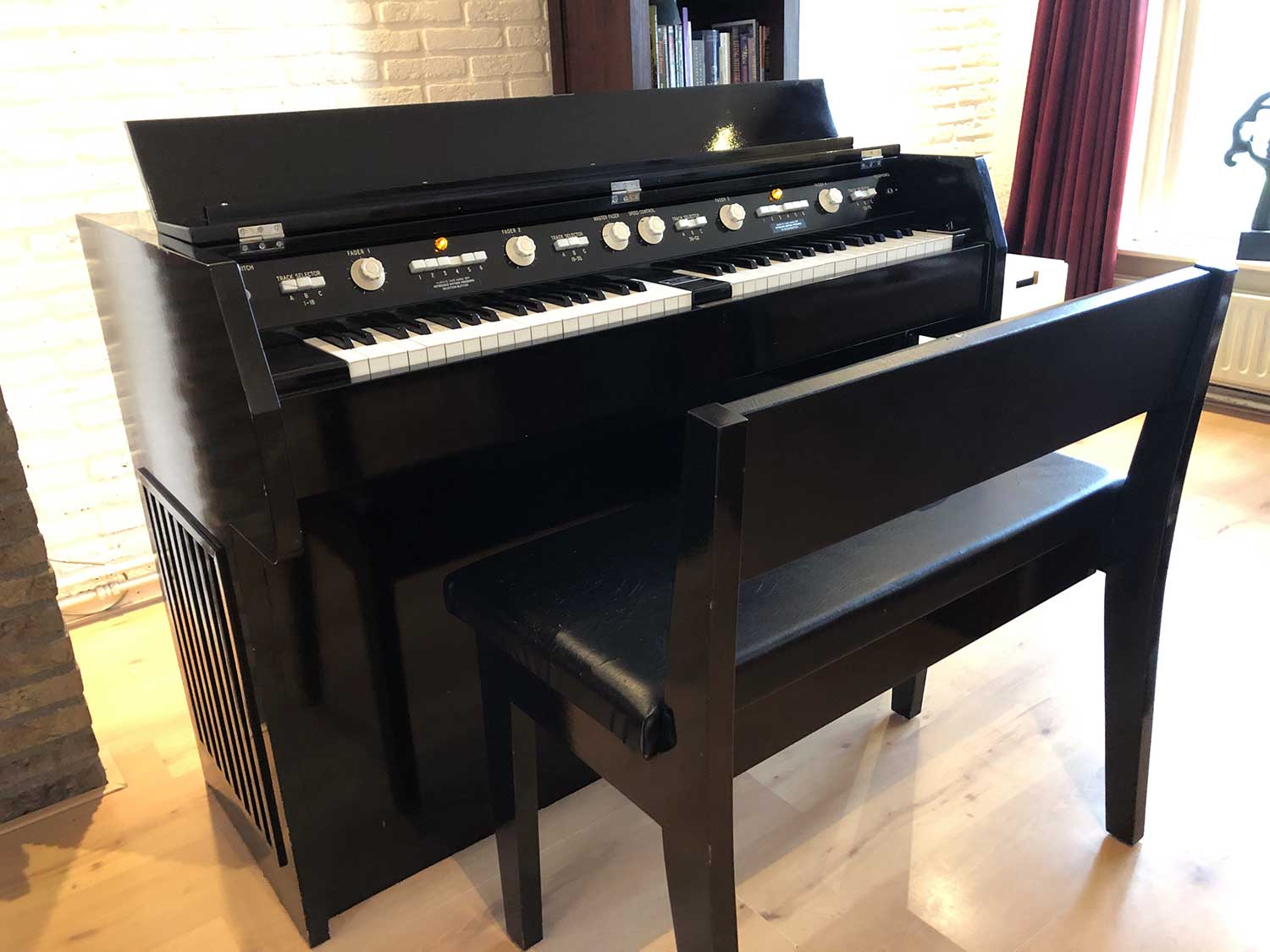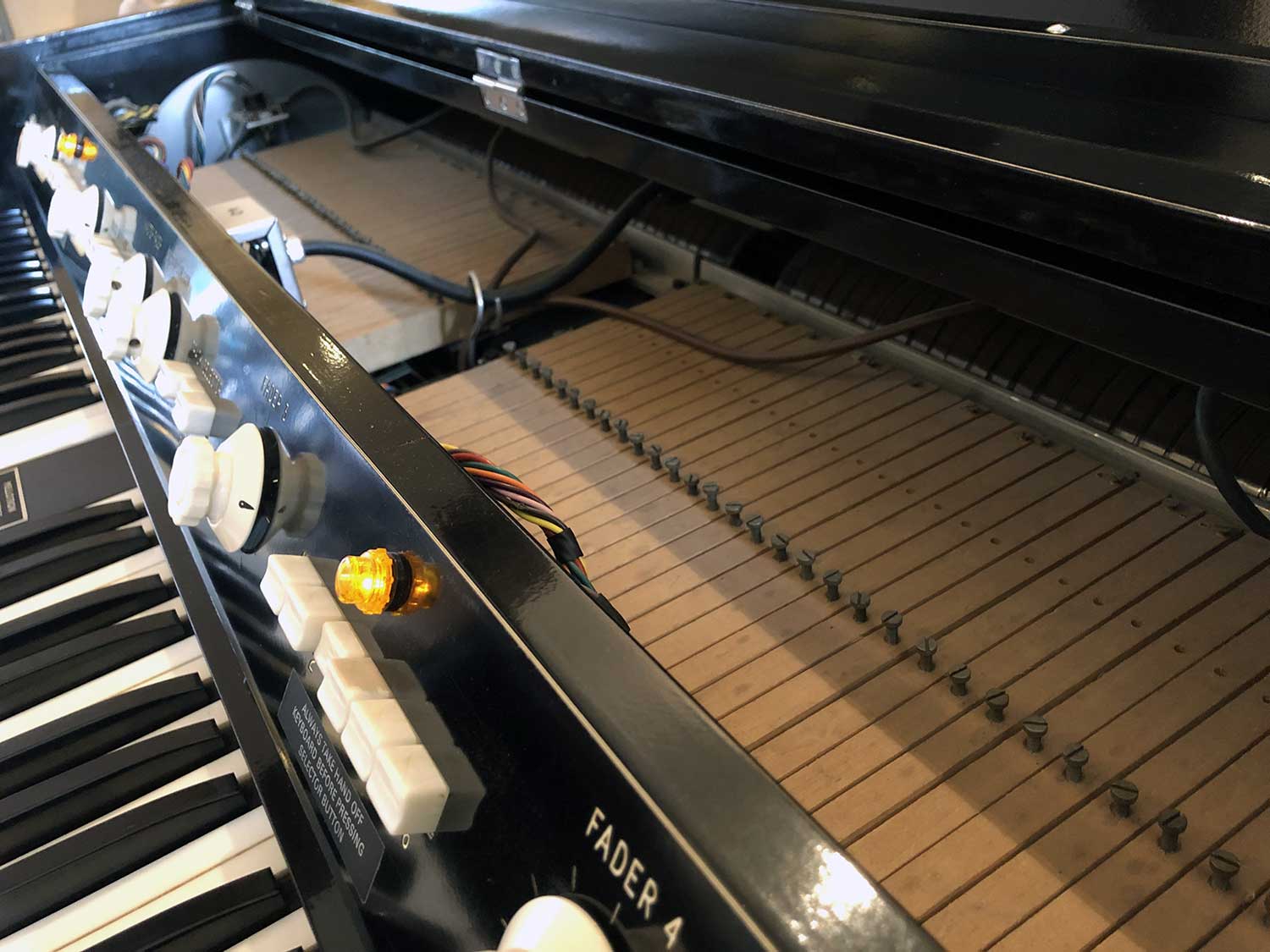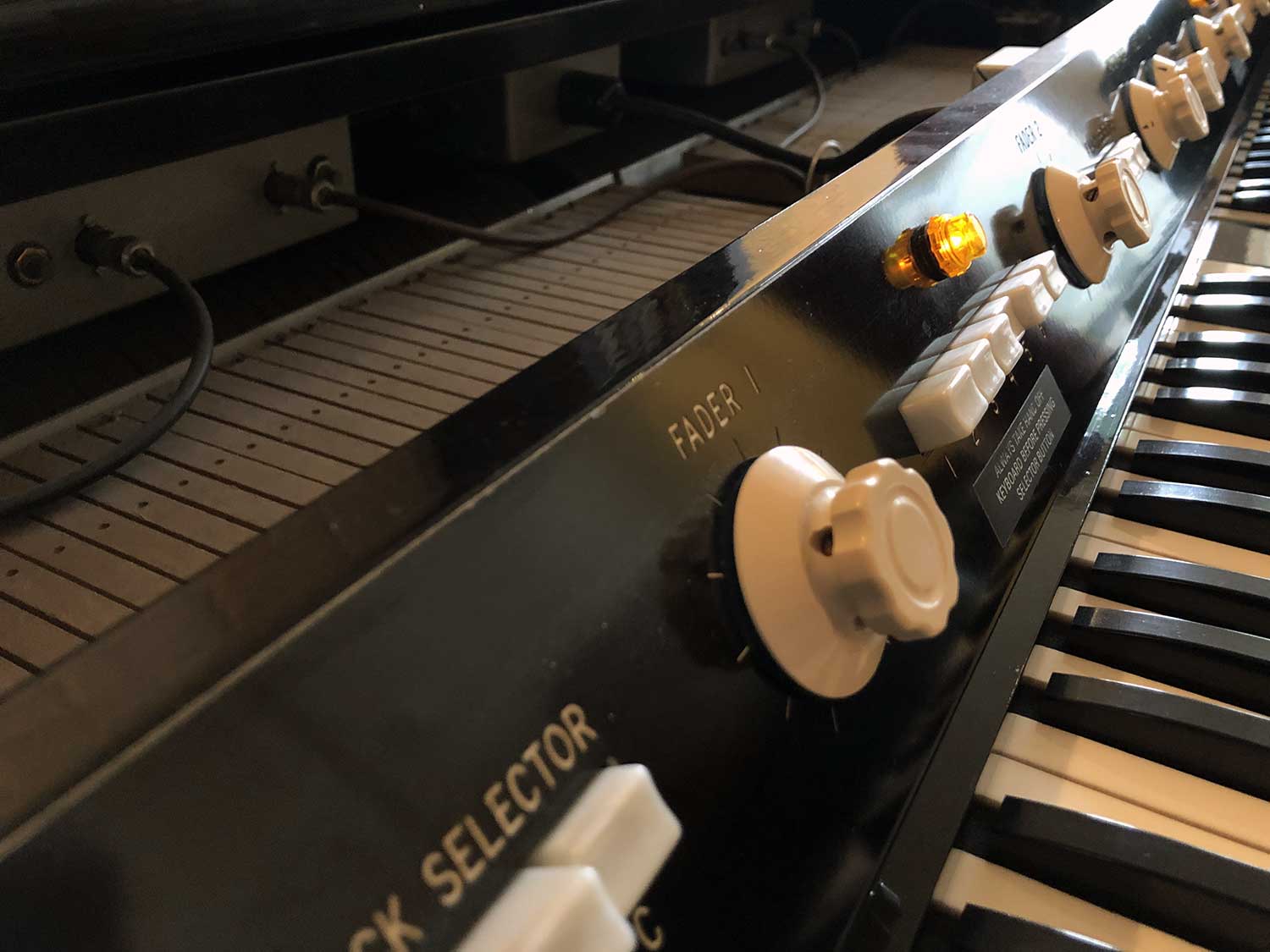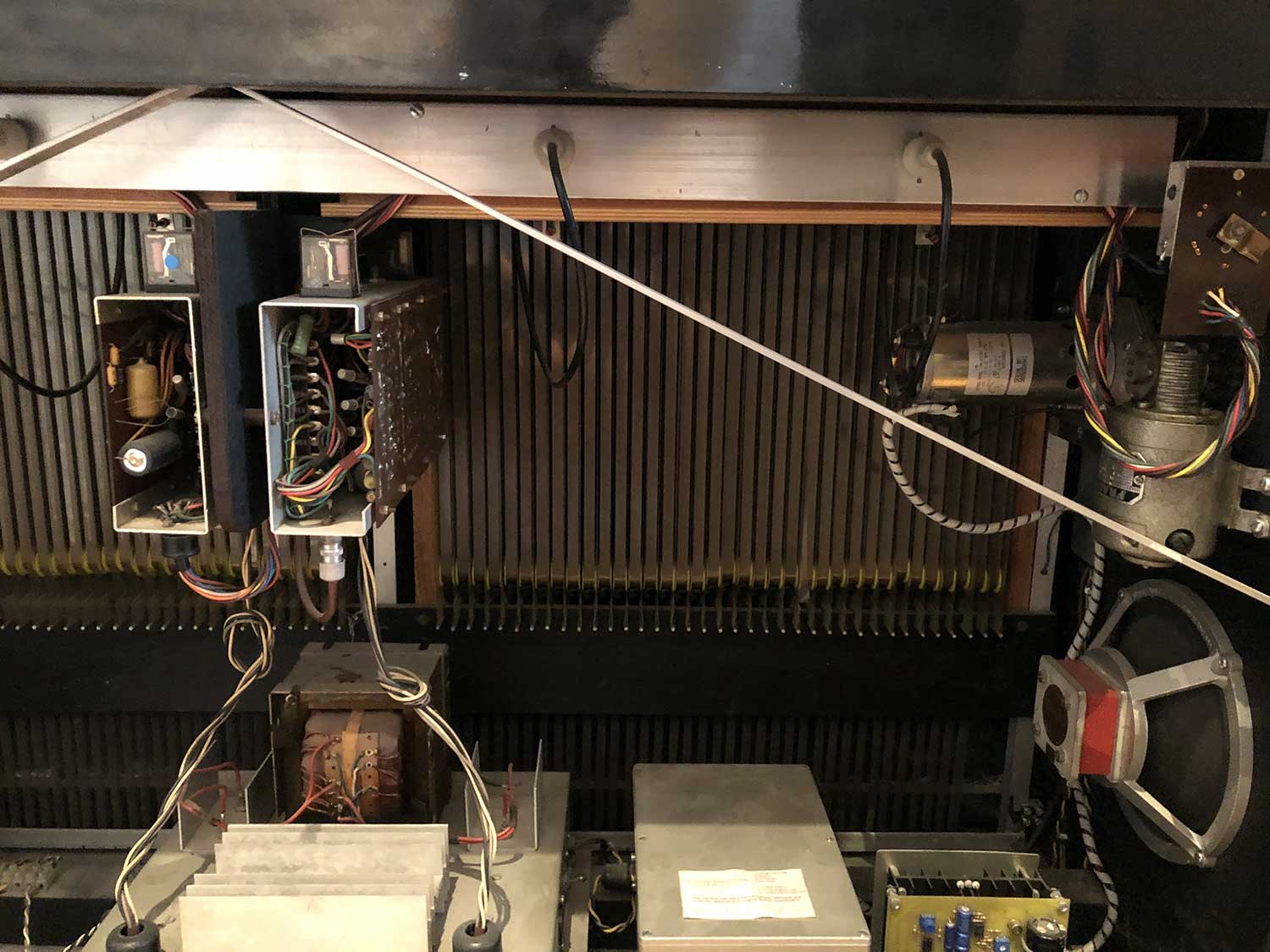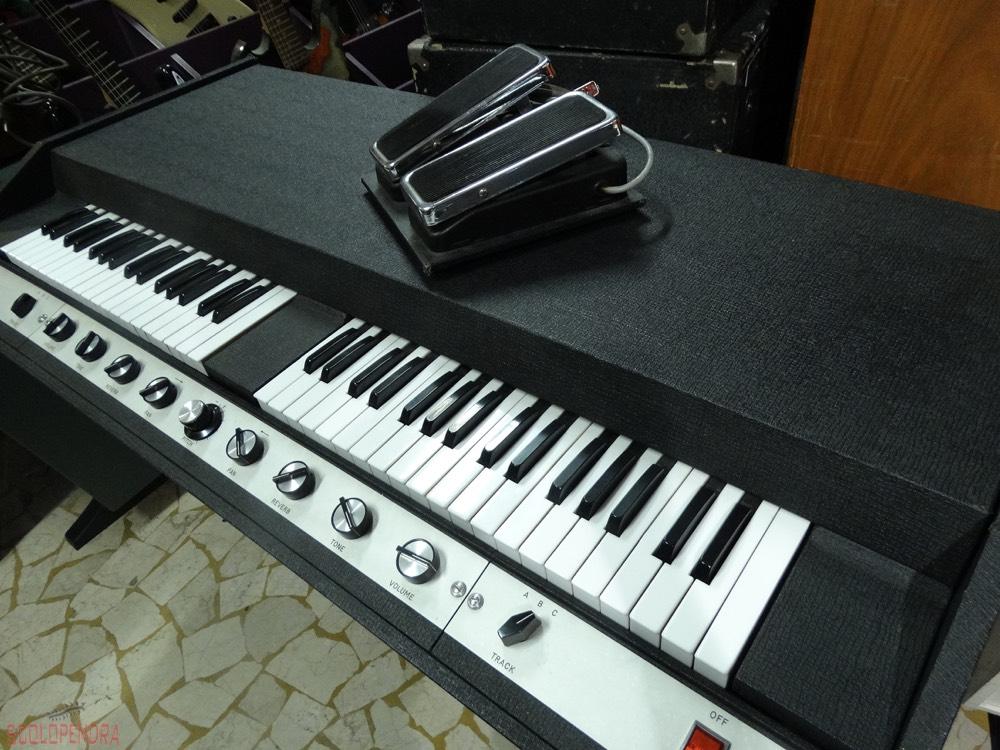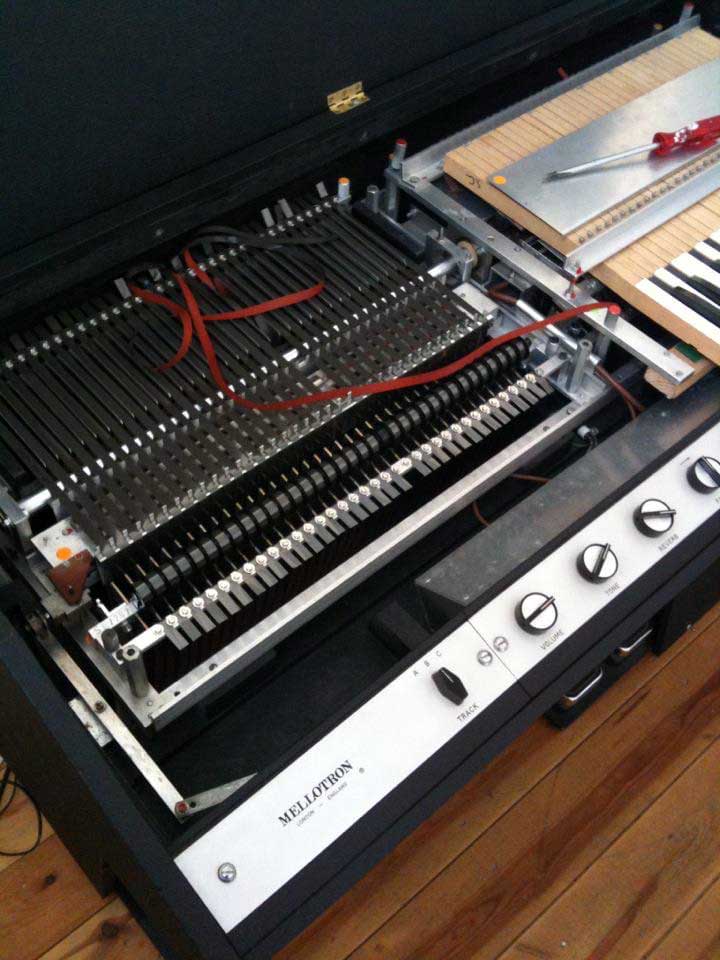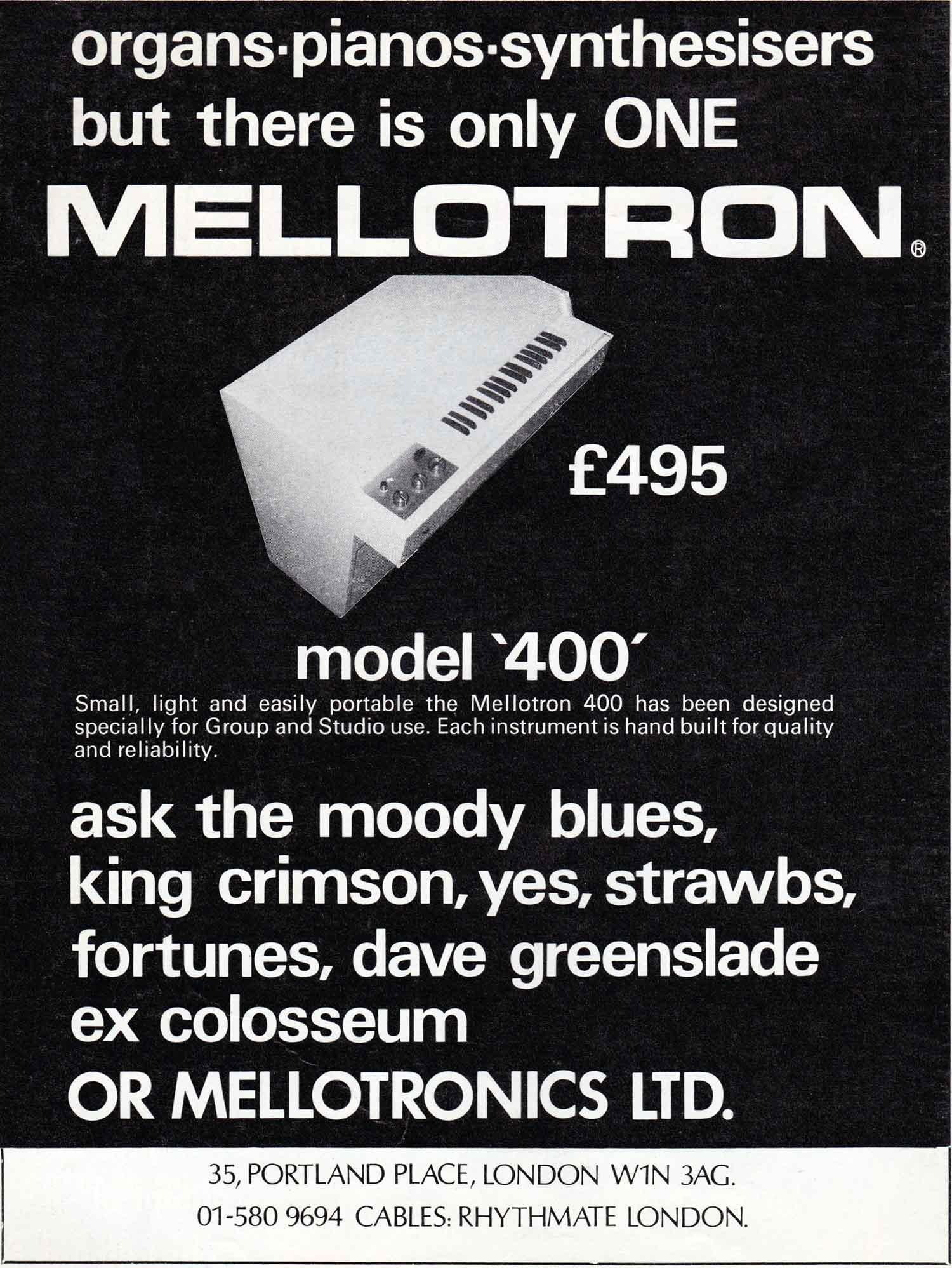”A new mini column sees the light today and is dedicated to an instrument of which everyone knows the sound but few know what it really is and how it is made... the Mellotron.
Lorenzo

The mellotron is a keyboard musical instrument that established itself in the late sixties and the first half of the seventies. It has no sound of its own, but can instead be considered the first sample player in history, being designed and built to reproduce the sound of symphonic acoustic instruments or human voices.
The sounds are recorded on tapes contained in special cartridges and are read and played by heads activated by pressing a piano keyboard, where, when a key is pressed, the tape is activated and made to slide under the reading head.
An example of the selectable sounds can be heard at the beginning of Strawberry Fields Forever, where the then almost unknown instrument is played by Paul McCartney.
The instrument became in the seventies one of the pillars of progressive rock, probably due to the debut of King Crimson, where the Mellotron was used decisively in a masterly way, becoming the trademark of many of their productions, but excellent and fascinating examples of The use of Mellotron can also be found in early PFM records.
It was first used by Graham Bond on “The Sound of ’65” album. Later it was also used by many others, including Moody Blues, Robert Wyatt, Genesis, Rick Wakeman, Yes, Jethro Tull, Barclay James Harvest, Deep Purple, Pink Floyd, Led Zeppelin, Rolling Stones, Motorpsycho, Herbie Hancock.
In this article we have as our guest Hessel Herder, a great enthusiast and expert on the instrument. He will tell us about his story and how this magical device entered his life to stay there forever. Those who know the Mellotron can understand well how this instrument can have this power because, in some ways, the Mellotron is alive!
Hessel is a composer, producer and studio engineer and started his career in Holland’s most prestigious studios, Wisseloord Studios, where he worked with a wide variety of acclaimed artists and bands such as Bon Jovi, Chrissie Hynde, Cranberries, Stereophonics, etc.
Since 2002 he’s also been producing and composing music for many national and international advertising campaigns and TV programs (Reebok, BMW, Braun, Sky Italia, etc).
«My love for the Mellotron started during my teen years, when I learned that the haunting yet compelling sounds heard on records by the Moody Blues, Beatles, Genesis, and many other post-1967 releases was an instrument called the Mellotron.
At that time there was very little literature around, apart from some references in books about the Beatles, most notably in Mark Lewisohn’s “The Beatles Recording Sessions”. During my days in music school I was able to get my hands on the CDRom released by Mellotron Archives, containing high quality and detailed samples of all the relevant sounds, and thus use these sounds in my own productions.
Up until then I had been using an EMU Classic Keys MIDI module, but the sounds in this unit weren’t very good. A little I landed a position as an engineer in one of Holland’s largest recording studio’s and lo and behold, there was a little white keyboard standing around in the studio’s basement, a snow-white M400. This was my first hands-on experience with the instrument, although that particular unit wasn’t in very good shape.
About 7 years later I encountered an ad on eBay, in which in a nearby town a Mellotron was offered at a reasonable price. Although this machine needed much work, both mechanically and cosmetically, I figured this was a once-in-a-lifetime chance to actually own the instrument I loved so much. So I picked it up and brought it home. It turned out that it was a very early version of the M400 (serial number #126…which would make it the 25th unit to come out of the factory). Typical for the early units were brass capstans and different motor control boards: the CMC4 instead of the CMC10 found later units; interestingly the CMC4 performed better than the CMC10, the former was also used in some MKII and M300 units.
At that time I started to make contact with other Mellotron aficionado’s across the globe, most of whom were connected via the yahoo mailing group, and thereby gaining valuable information and insight into the workings of the Mellotron. Most notably I came to know Martin Smith & John Bradley from Streetly Electronics and Streetly affiliate Klaus Hoffman from Germany. With Martin sending missing parts and new tapes-/ tape frames Klaus was able to refurbish the machine inside and out.
Somewhere along the line a switched jobs, driven forward by my ambition to compose, arrange and produce music for media, specifically advertising.
I was very happy to use M400#126 in some productions. At that point, I had the more common sounds on my tape frames: 3violins ( THE prog-rock string sound), the flute, brass, 8 voice choir, etc.
Interesting note: the 3 violins sound originated as a Chamberlin sound, the Chamberlin being the Mellotron’s (American) precursor. It is the only sound shared by the two instruments. When compared, the same sound sounds vastly different, the Chamberlin sounding much cleaner and hi-fi than the Mellotron. This is also because sounds found in a Mellotron are about four generations away from the master tape.
What I did learn was that a Mellotron needs regular maintenance; cleaning the heads and tapes, adjusting the keyboard’s rollers/pressure pads, etc. Never a dull moment with a Mellotron!
The Mellotron MKII
At some point I traveled to the Streetly workshop in the UK, to meet Martin Smith and John Bradley, to check out their then-new instrument the M4000. Luckily for me, they still had an MKII machine in storage that needed restoring.
It’s important to understand that there is a big difference between the M400 and the MKII.
The MKII has two keyboards, which in turn give access to 6 “stations” / different longitudinal positions on the tapes. The tapes themselves offer three tracks. So all in all, an MKII has 36 sounds (18 per keyboard), whereas the standard M400 only has 3.
In the latter one can exchange the tape frames quite easily. The changing of sounds on the MKII involves the shuttling/cycling of the tapes to a new position. This is all done in the analog way: with a sync tape, a position wiper and a contraption called an SSCU. It works surprisingly well!
You can imagine however that this delicate system is not meant to be used on the road.
The Moody Blues toured extensively with an MKII, and apparently hardly had any issues with the cycling mechanism. The fact that the Moodies keyboard player used to work at Streetly, test driving Mellotrons, certainly must have helped!
The MKII I own is officially known as an MKIIfx, which means it was modified to be used in broadcast studios to playback SFX. The modifications included an improved signal-to-noise ratio, as it was specifically aimed at being an instrument used for recording.
Many MKIIfx instruments were fitted with music tapes. The Abbey Road Mellotron, which Paul McCartney now owns, is one of these converted MKIIfx machines.
… but how does it sound?
Click The Button and listen to Hessel’s Mellotron MKII
Later on, I also obtained, played and maintained an M300, an MKV and two additional M400’s.
The M300 is the successor of the MKII, also sports a cycling mechanism, but uses ¼-inch tape instead of the regular ⅜ inch. The more narrow tape width makes this model a bit more delicate or rather less sturdy than the other models, but still a fantastic machine.
Originally the M300 came with all-new recordings! The M300 violins are well known (Barclay James Harvest).
One of the additional M400’s was a relatively young unit, having left the factory in the early ’80s, and it was rebranded with the name Novatron; at some point in the late ’70s, Streetly Electronics lost the rights to the Mellotron brand name. They still produced Mellotrons, but sold and marketed them under the name Novatron.
This particular M400 was very tough and stable and came in a speckled black cabinet.
The same goes for the MKV, which is basically two M400 side by side.
So the MKV offers 6 sounds, a beautiful cabinet design completely different from the M400, has a reverb tank on board, and funnily enough, has the control knobs in front of the actual keys!
The best model, for me, is still the MKII, and this is the model I still own and play regularly.
The sheer amount of sounds, the feel of the keyboard, the smell, the vibrations.
With all of these instruments, I have had many moments of joy and of creative flow.
Of course, there have been technical issues, but nothing which couldn’t be fixed.
As a Mellotronist, you are better off learning about how to maintain or repair the instrument, as there are very few people out there who can fix it for you, and the size of the instrument doesn’t help either. There is a certain beauty in this…of needing to care for your instrument.
Tom Waits described it beautifully once… ”each time you play the Mellotron it dies a little”.
Very human for a machine!»
We greet and thank our friend Hessel for his great kindness and maximum availability, it was a great pleasure to collaborate with him!
To contact Hessel Herder.

